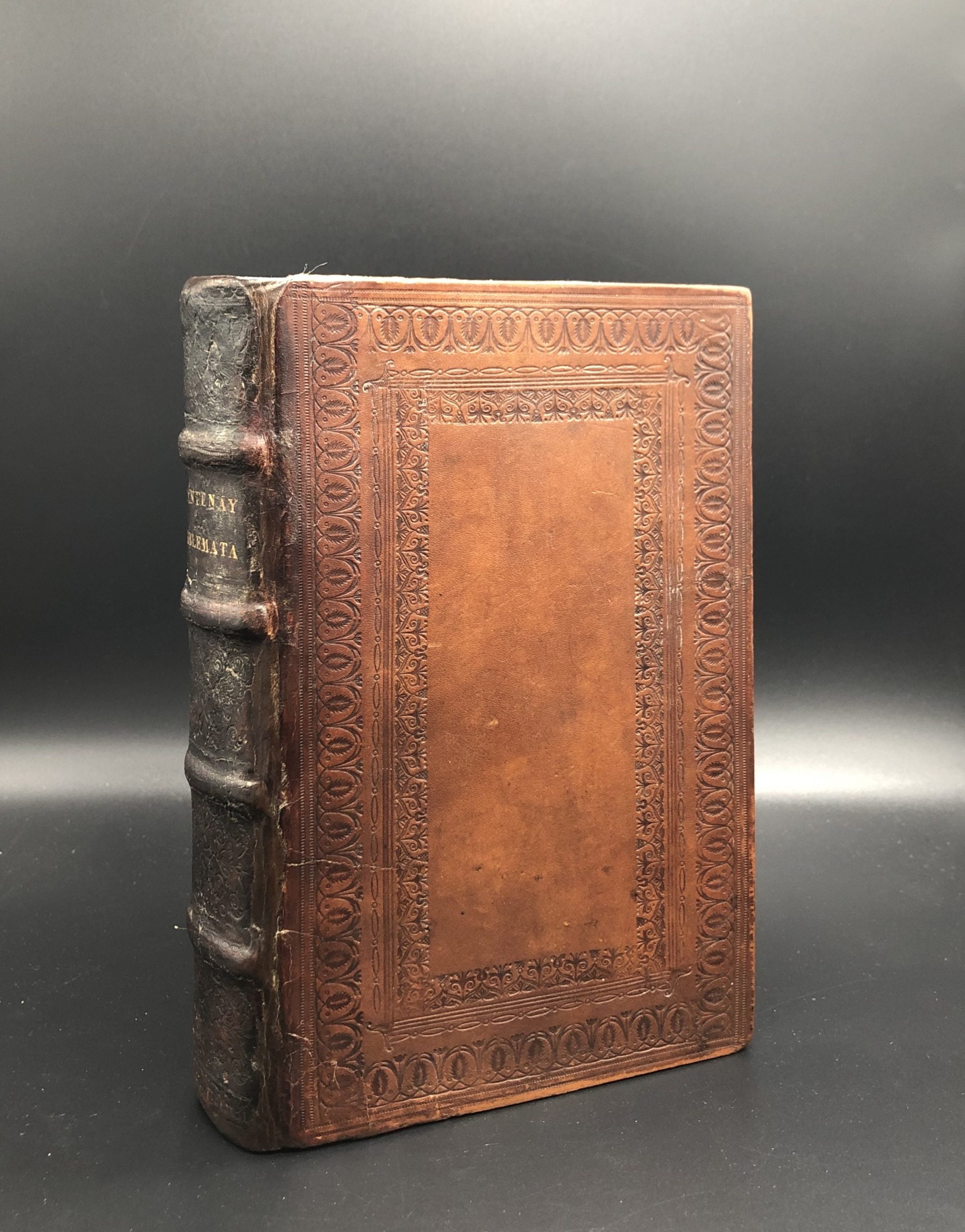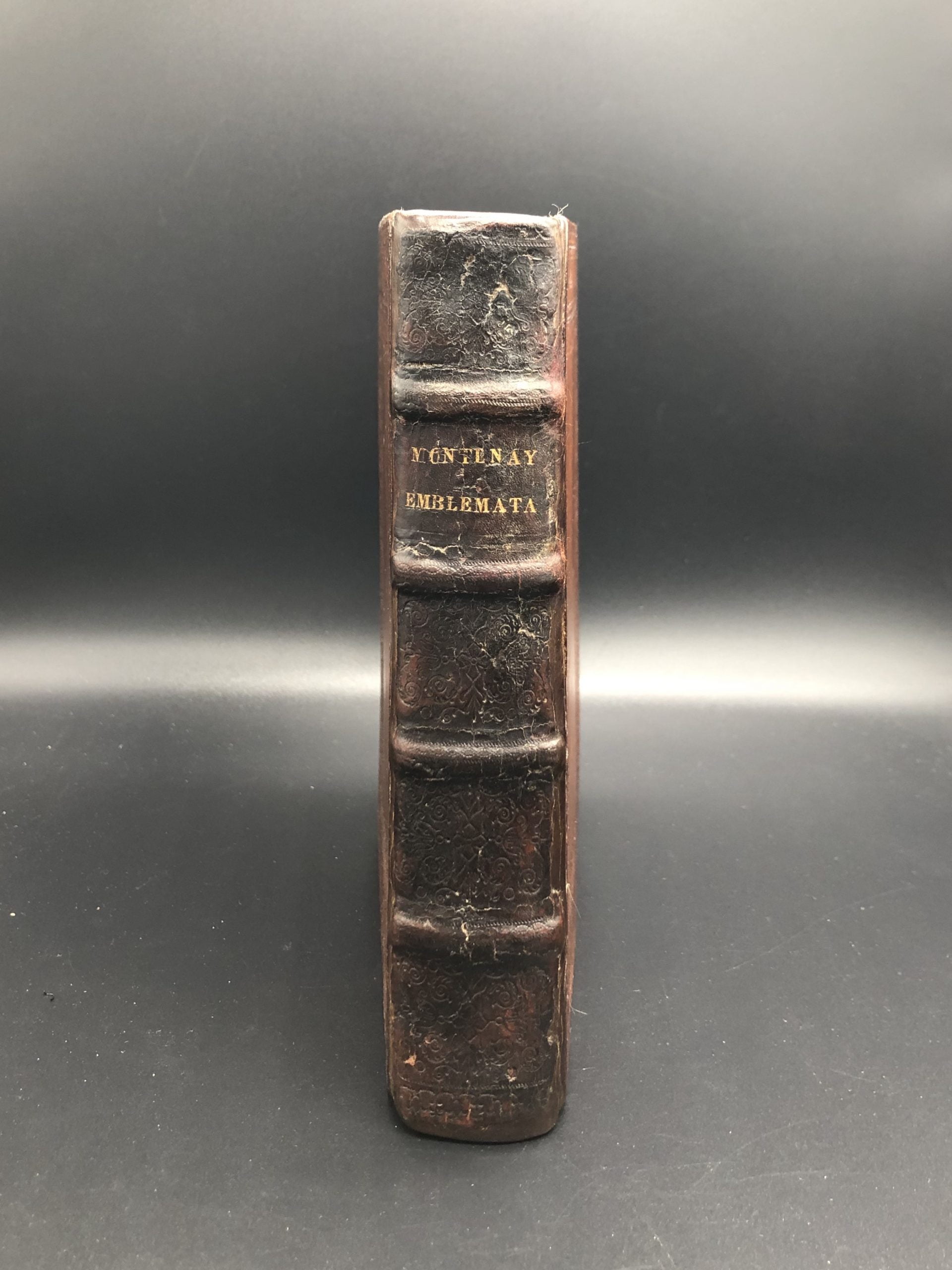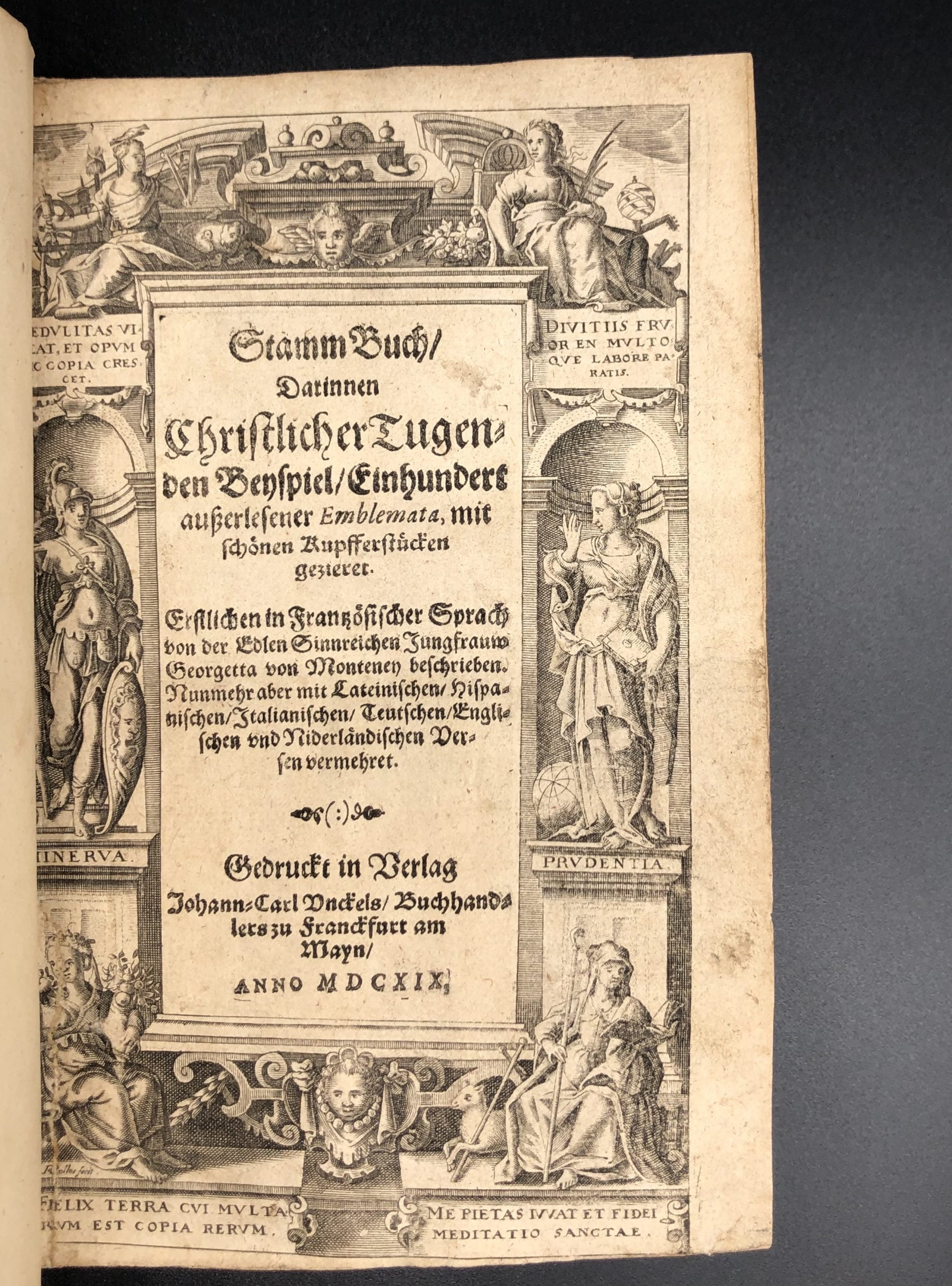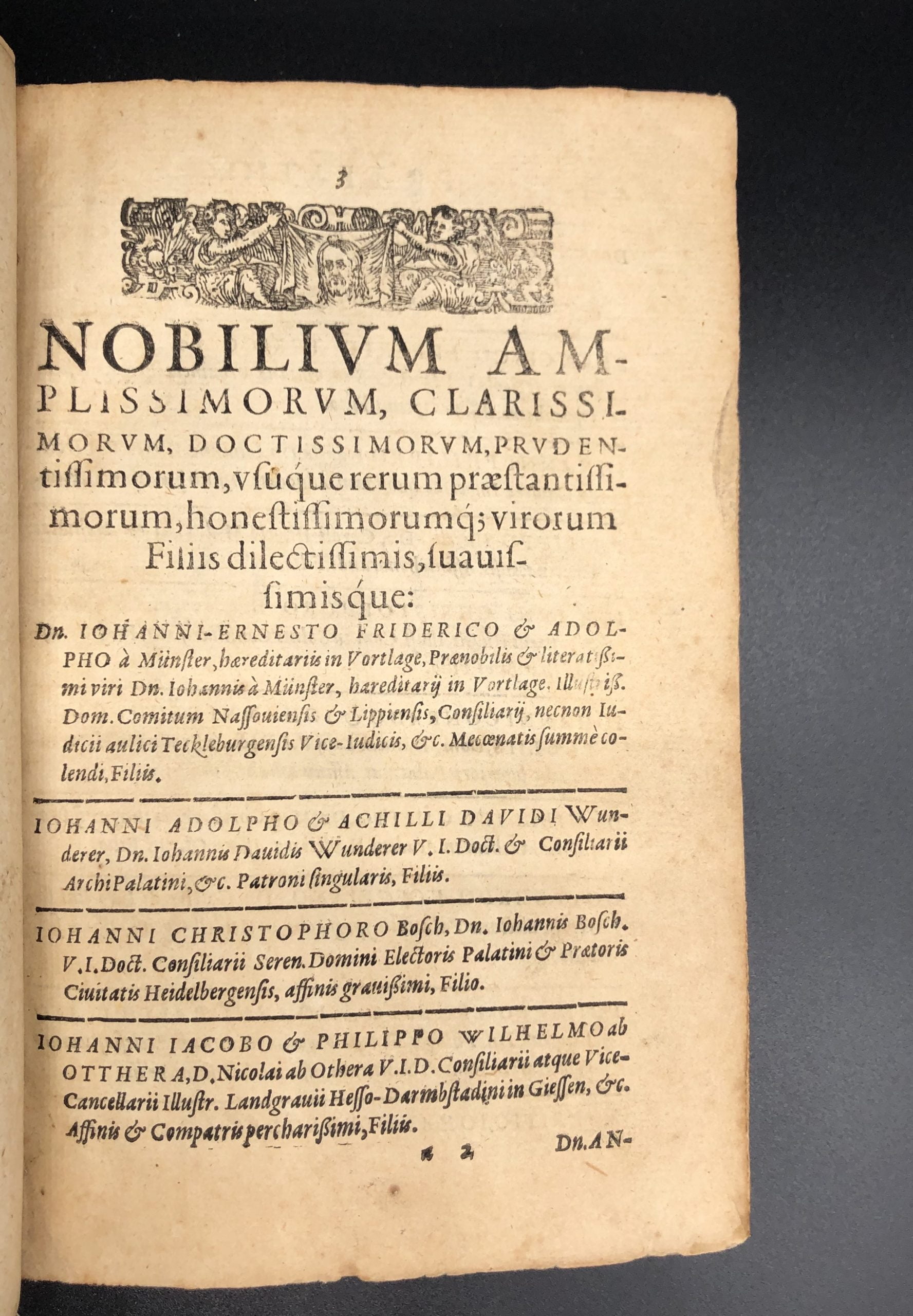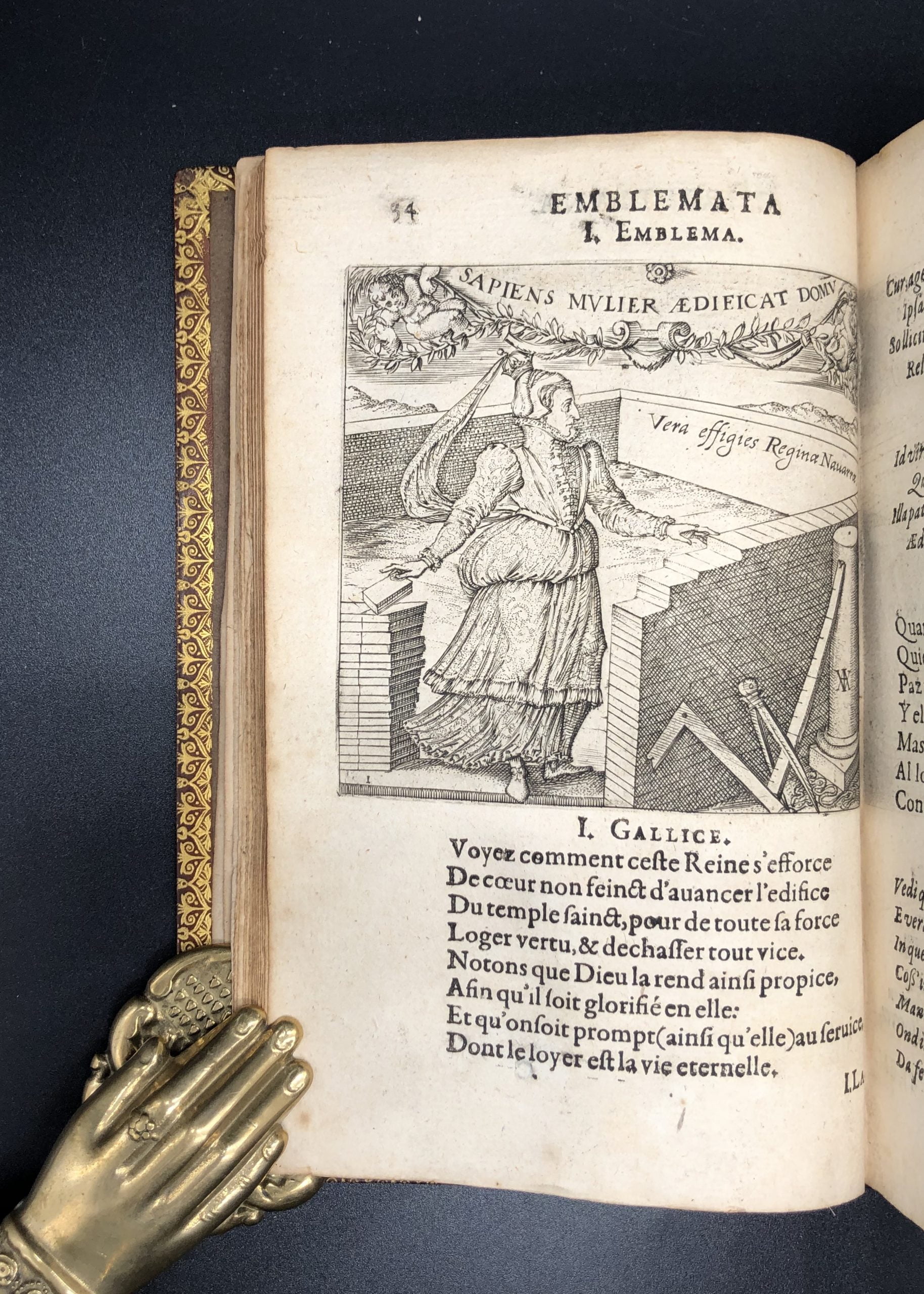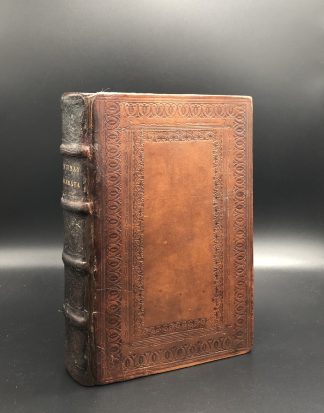MONTENAY, Georgette de.
HANDSOME POLYGLOT EMBLEMS
Stamm buch, darinnen Christlicher tugenden beyspiel/einhundert ausserlesener emblemata
Frankfurt am Main, John Charles Unckel, 1619£3,250.00
FIRST EDITION thus. 8vo. pp. 447 (i). Roman letter, with Gothic and Italic. Engraved architectural t-p with female allegorical figures, half-page engraved portrait of the author, 100 half-page engraved emblems, decorated initials and ornaments. T-p slightly dusty, backed, light marginal spotting, the odd mark. A good copy in (C18?) morocco, rebacked, original spine onlaid, double and triple blind tooled to a panel design with floral borders, raised bands, spine blind-tooled and gilt-lettered, inner edges gilt, a.e.g., richly gauffered to a floral design (C17).
A good copy, with handsome gilt and gauffered edges, of the first polyglot edition, printed in Germany, of this famous C16 emblem book by the Calvinist Georgette de Montenay—’the very first realisation in the immense field of religious emblems’ (Choné, ‘Lorraine’, 19) and the first emblem book to use engravings instead of woodcuts. Though married to a Catholic, Georgette (1540-81) was associated with Jeanne d’Albret, the Protestant queen of Navarre. This work was first published in French as ‘Emblemes ou devises chrestiennes’ in 1567-71; in the dedication to the Queen, the author called them ‘the first Christian emblems’. In 1584, it was published in Latin in Zurich and reprinted in Heidelberg in 1602. In the present polyglot edition—the title of which is recorded in several of the languages it features—the 8-line verse accompanying each emblem is presented in German, English (not very good), Dutch, French (from the first edition), Latin (from the 1584 edition), Spanish and Italian. At the end of each section a page is left blank to host the autographs of acquaintances, turning the book into an ‘album amicorum’ or ‘stamm buch’, as explained in the title. The superb 100 engraved allegorical emblems were produced by Peter Woeiriot and pulled from the original plates. Montenay ‘stands at the beginning of the line of Christian and at first specifically Protestant emblem books in France’, assuming a Protestant identity through ‘outspoken attacks on the papacy’ and ‘her association of evil with the representatives of Catholicism’ (Adams, ‘Webs’, 9-10).
SMU, Delaware and Trinity College copies recorded in the US.Praz, Studies, p. 431 (1571 French ed.); BerlinCat 4516 (1584 Latin ed.); Landwehr, German Emblem Books, 445. Not in BL STC Ger. C17 or Brunet. A. Adams, Webs of Allusion: French Protestant Emblem Books of the 16th Century (Geneva, 2003); P. Choné, ‘Lorraine and Germany’, in The German-Language Emblem in Its European Context, ed. A. Harper et al. (Glasgow, 2000), 1-22.In stock


